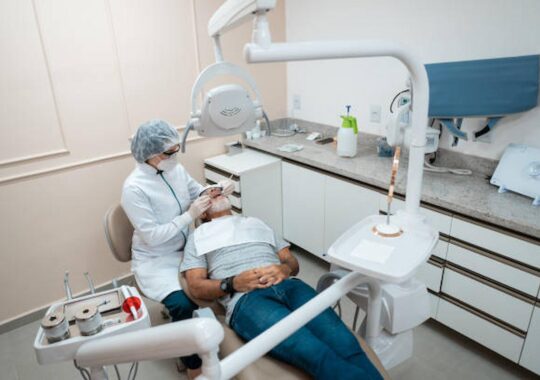Thinking about abortion? This comprehensive guide explores the two most common abortion techniques—medical and surgical—to help you make an informed decision.
Abortion is a deeply personal and often complex decision. Whether it’s due to health reasons, individual circumstances, or other factors, many people consider this option at some point in their lives. When thinking about abortion, understanding the available methods is crucial. This article provides a detailed overview of the two most popular abortion techniques: medical and surgical. By exploring the specifics, benefits, and potential risks associated with each, we aim to offer a straightforward, comprehensive resource to help you make an informed decision.
Medical Abortion: What It Is and How It Works
Medical abortion, often referred to as the abortion pill, involves the use of medication to terminate a pregnancy. This method is typically used within the first ten weeks of pregnancy. It involves two drugs: mifepristone and misoprostol. Mifepristone works by blocking the hormone progesterone, which is necessary for pregnancy to continue. Misoprostol causes the uterus to contract and expel the pregnancy.
This method is popular because it allows for privacy and can be done at home. The process usually takes a few days and involves cramping and bleeding, similar to a heavy period. Medical abortion is highly effective, with a success rate of over 95% when taken within the recommended timeframe.
Surgical Abortion: An Overview of Procedures and Protocols
Surgical abortion encompasses several techniques, depending on the stage of pregnancy. The most common methods are Vacuum Aspiration (also known as suction aspiration) and Dilation and Evacuation (D&E).
Vacuum Aspiration is typically used up to 16 weeks of pregnancy. It involves dilating the cervix and using gentle suction to remove the pregnancy tissue. This procedure is quick, usually 10-15 minutes, and can be performed under local anaesthesia or sedation.
Dilation and Evacuation (D&E) is generally used after 16 weeks. It involves dilating the cervix and using surgical instruments along with suction to remove the pregnancy. This procedure is more complex and may require stronger anaesthesia or sedation.
Both methods are safe and effective, with high success rates. They are performed in clinics or hospitals, ensuring professional medical care.
Comparing Medical and Surgical Abortion: Pros and Cons
When thinking about abortion, it’s essential to weigh the pros and cons of both medical and surgical options.
Medical Abortion
Pros: It can be done at home, offers more privacy, feels more natural, like a miscarriage, non-invasive.
Cons: It requires multiple steps and follow-up visits, involves significant cramping and bleeding, and is a slightly longer process.
Surgical Abortion
Pros: Quick procedure, immediate results, less bleeding afterwards, fewer follow-up visits needed.
Cons: It must be done in a clinic or hospital, is more invasive, and has the potential for anesthesia-related side effects.
Understanding these differences can help you decide which method best fits your needs and circumstances.
Safety and Efficacy: What the Research Says
Abortion, whether medical or surgical, is one of the safest medical procedures when performed by qualified professionals. Extensive research has shown that both methods have very low complication rates.
Medical abortions have a success rate of about 95-98% when conducted within the first ten weeks. Surgical abortions have a success rate of nearly 99%. Complications, such as infection or heavy bleeding, are rare and manageable with proper medical care.
Studies consistently show that access to safe, legal abortion does not increase health risks and is far safer than carrying a pregnancy to term. It’s crucial to seek care from certified providers to ensure the highest safety standards.
Emotional and Psychological Considerations
Deciding to have an abortion can be emotionally complex. It’s normal to experience a range of emotions, from relief to sadness. Having a support system and access to counselling can be incredibly beneficial.
Medical abortions might feel more private and controlled, which some find comforting. Surgical abortions, though more clinical, are quick and over with sooner, which others may prefer.
Many people find peace with their decisions over time, but it’s essential to acknowledge and address any emotional reactions you may have. Support groups and mental health professionals can provide necessary guidance and support.
Legal and Ethical Dimensions of Abortion
The legal status of abortion varies widely around the world, influenced by cultural, religious, and political factors. In many countries, abortion is legal with varying restrictions based on gestational age and specific conditions.
Ethical considerations are deeply personal and often influenced by individual beliefs. The debate around abortion rights centres on the balance between a person’s right to choose and the protection of potential life.
Understanding the legal framework in your area and reflecting on your values can help clarify your decision. Advocacy and support organisations are valuable resources for navigating these complex issues.
Access and Availability: Barriers and Support Systems
Access to abortion services can be limited by geographic, financial, and legislative barriers. Rural areas often have fewer providers, and some regions have laws restricting access through waiting periods or mandatory counselling.
Support systems, including non-profits and advocacy groups, work to improve access and provide financial assistance. Telemedicine has also expanded access to medical abortions, allowing more people to obtain care remotely.
Knowing your rights and available resources can help overcome these barriers. Organisations such as Planned Parenthood and the National Network of Abortion Funds offer comprehensive support and information.
Aftercare and Recovery: What to Expect
After an abortion, your body needs time to recover. This process varies depending on the method used.
Medical Abortion:
- Expect cramping and bleeding for a few days to weeks.
- Follow-up appointments ensure the procedure’s success and address any complications.
Surgical Abortion:
- Recovery is generally quicker, with less bleeding.
- Most people return to normal activities within a few days.
Both methods may involve temporary emotional and physical symptoms. It’s important to follow your healthcare provider’s instructions and seek help if you experience severe pain, heavy bleeding, or signs of infection. Supportive aftercare includes rest, hydration, and emotional support.
Conclusion
When thinking about abortion, understanding the medical and surgical options is vital for making an informed choice. Both methods are safe effective, and cater to different needs and circumstances. You can navigate this challenging decision with confidence and care by considering the medical aspects, emotional implications, and available support systems.
Whether you choose a medical or surgical abortion, prioritising your health and well-being is paramount. Access to accurate information and compassionate healthcare ensures you can make the best decision.






I’m grateful for this insightful exploration of the two primary abortion techniques. As someone who believes in empowering women with knowledge about their reproductive health, understanding the specifics of these procedures is paramount. The article delves into the intricacies of each method, from medical abortion using pills to surgical procedures like vacuum aspiration. It highlights the importance of access to safe and legal abortion services while providing a balanced view of the medical considerations and ethical debates surrounding them. This nuanced discussion is essential for fostering informed decision-making and promoting compassionate dialogue on a topic often clouded by stigma and misinformation. If you’re thinking abortion?, seeking consultation could provide clarity and support in making the best decision for your circumstances.